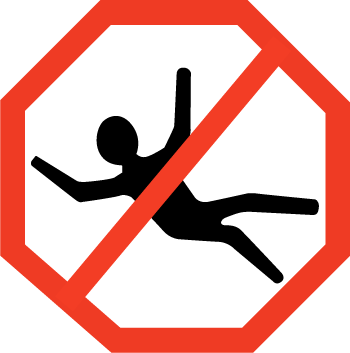HOW SLIP TECH NON-SLIP COATING PREVENTS SLIPPERY FLOORS:
SLIP TECH Floor and Safety treatment uses technology from the computer chip industry to make any ceramic, tile, stone, or agglomerate surface extremely slip resistant through micro-etching. The anti-slip coating does not look rough to the human eye, but with a high-powered microscope it looks like the Himalayan Mountains with millions of peaks and valleys. When a shoe makes contact with the wet tile, water is evacuated, forming a suction that creates a non-slip surface, unlike other non-slip floor coatings that are merely a topical adhesive.
The surface does not look rough to the human eye, but with a high-powered microscope it looks like the Himalayan Mountains with millions of peaks and valleys.

We are the oldest and largest anti-slip floor coating contractors in the world, with offices in the United States, Australia, England, Ireland, and New Zealand. Millions of square feet of tile have been treated with our non-slip product to prevent slips, falls, and lawsuits to the great satisfaction of many architects, property managers and building owners. Our non-slip coating solution can solve your slippery floor problem anywhere in the world. Call us to learn more about our unique SLIP TECH product that blows traditional non-slip floor coatings away.
Excerpt from A.D.A. Guidelines
...A research project sponsored by the Architectural and Transportation Barriers Compliance Board (Access Board) conducted tests with persons with disabilities and concluded that a higher coefficient of friction was needed by such persons. A static coefficient of friction of 0.6 is recommended for accessible routes and 0.8 for ramps.... /
A.D.A. Accessibility Guidelines (Appendix 4.5.1)
Pertaining to Ground and Floor Surfaces
People who have difficulty walking or maintaining balance or who use crutches, canes, or walkers, and those with restricted gaits are particularly sensitive to slipping and tripping hazards. For such people, a stable and regular surface is necessary for safe walking, particularly on stairs. Wheelchairs can be propelled most easily on surfaces that are hard, stable, and regular. Soft loose surfaces such as shag carpet, loose sand or gravel, wet clay, and irregular surfaces such as cobblestones can significantly impede wheelchair movement. Slip resistance is based on the frictional force necessary to keep a shoe heel or crutch tip from slipping on a walking surface under conditions likely to be found on the surface. While the dynamic coefficient of friction during walking varies in a complex and non-uniform way, the static coefficient of friction, which can be measured in several ways, provides a close approximation of the slip resistance of a surface. Contrary to popular belief, some slippage is necessary to walking, especially for persons with restricted gaits; a truly "non-slip" surface could not be negotiated.
The Occupational Safety and Health Administration recommends that walking surfaces have a static coefficient of friction of 0.5. A research project sponsored by the Architectural and Transportation Barriers Compliance Board (Access Board) conducted tests with persons with disabilities and concluded that a higher coefficient of friction was needed by such persons. A static coefficient of friction of 0.6 is recommended for accessible routes and 0.8 for ramps.
It is recognized that the coefficient of friction varies considerably due to the presence of contaminants, water, floor finishes, and other factors not under the control of the designer or builder and not subject to design and construction guidelines and that compliance would be difficult to measure on the building site. Nevertheless, many common building materials suitable for flooring are now labeled with information on the static coefficient of friction. While it may not be possible to compare one product directly with another, or to guarantee a constant measure, builders and designers are encouraged to specify materials with appropriate values. As more products include information on slip resistance, improved uniformity in measurement and specification is likely. The Access Board's advisory guidelines on Slip Resistant Surfaces provides additional information on this subject.